Oh butter – pure, golden, full of flavor… the word itself is used to describe such desirable qualities as tender, melting, sweet, and unctuous. Buttery. Whether you eat it or not (due to dietary reasons or otherwise), it’s hard to deny its glory. We even strive to mimic its unique flavor with artificial substitutes (though I have to say, I can and do believe it is not butter). And as if it weren’t good enough on its own, with just a few simple steps butter can be transformed into something even more amazing. If you’ve never had the pleasure of tasting the rich, aromatic flavor of clarified butter, brown butter, or ghee, you are truly in for a treat!
(And if you have, I probably don’t have to convince you how good it is!)
It’s FAK Friday (Feeding my Appetite for Knowledge), and this week I’m making clarified butter, and talking about the difference between clarified butter, browned butter, and ghee. I’ve got step-by-step photos, and instructions on how to make all three. As always, I’ve tried to be as accurate as possible, but if you notice any errors feel free to leave me a comment at the bottom of the page!
________________________________
Clarified Butter, Brown Butter, and Ghee
Butter is made up of three things – fat, milk solids, and water. To make clarified butter or ghee, the butter is heated to evaporate the water and separate the milk solids, leaving a behind a rich, golden liquid with sublime flavor. Browned butter is made the same way, only it is cooked until the milk solids caramelize, resulting in a deeper flavor.
For all of these applications, unsalted butter is a must. The reason (and the reason unsalted butter is called for in baking) is two fold: firstly, salt acts as a preservative, giving salted butter a longer shelf life (meaning that unsalted butter is more likely to be fresh), and secondly, salt can mask other unwanted flavors, so if the butter is past its due, or has picked up flavors from other things in the fridge, it’s harder to tell. It’s also important in baking because different brands add different amounts of salt, making it hard to control the amount that goes into a recipe. I use unsalted butter 99% of the time (the other 1% being when I buy salted accidentally). Remember, you can always add salt later if you want.
It is also important that you use high-quality butter, because the difference will be much more noticeable once cooked. I recommend either hunting down some local Amish butter, or buying imported butter from Ireland or Italy (it’s no secret I’m a big fan of
Kerrygold Irish Butter). Use what you can find, or if you know someone with cows,
make your own!
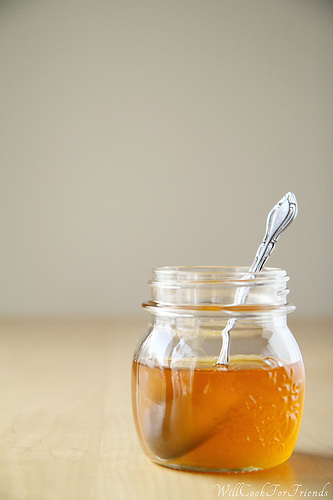 |
| Clarified Butter |
Clarified Butter (sometimes called drawn butter) has had almost all of the moisture and solids removed. It is often used for cooking at higher temperatures or for longer periods of time, because where regular butter would burn and turn bitter, clarified butter does not. It is also commonly served alongside seafood with a squeeze of lemon for dunking. Clarified butter can be stored in a jar in the fridge for up to a few weeks.
Ghee is traditional in Indian cuisine, and is very similar to clarified butter. The difference is that ghee is cooked a little longer to evaporate all of the moisture, separate all of the milk solids, and deepen the flavor. As it cooks, the milk solids turn golden-brown, but are not darkened enough to be called ‘brown butter’. It is frequently spread on naan bread or paratha, as well as used in cooking, and has long been considered much healthier than plain butter. It has an incredible richness, and is wonderful spread on toast or drizzled over popcorn (one of my favorite uses for it, in fact). Ghee is sometimes flavored with herbs, spices, or garlic (which are added to the pot with the butter, and strained out with the milk solids), but in its plain form is almost interchangeable with clarified butter. Because all of the water and milk solids have been removed, ghee can be kept on the counter instead of the fridge (though I prefer to refrigerate it anyway, just to be safe ), and since it is shelf stable can be found in the international isle of some grocers.
Browned Butter is cooked slightly longer, until the milk solids separate and begin to brown on the bottom of the pan. This brings out an even deeper flavor, but be careful not to burn it or else it will be bitter! Browned butter is often used in sauces, or in baking for cakes or cookies to add a depth of flavor, and the milk solids aren’t usually strained out as they are with clarified butter and ghee. While clarified butter and ghee are often made in larger batches and stored, brown butter is generally made in small amounts, as needed for a recipe. I’m sure it could be stored in the fridge for up to a week or more, but because the solids have not been strained out brown butter will go rancid much more quickly than the other two.
________________________________
To Make clarified butter, ghee, or browned butter, you will need to start with high-quality unsalted butter. Here I’m using half a pound, but you can use whatever amount you would like. Keep in mind that the butter will reduce somewhat, so you should start with more than you need – my half pound reduced by about 25%. You will also need a medium sized saucepan, preferably with a shiny surface (i.e., stainless steel, not non-stick) so you can see the color of the butter clearly, and a mesh strainer, some cheese cloth, and a thoroughly cleaned and dried glass jar.
Start by melting the butter of medium-low heat. Once melted, it will begin to bubble and foam – reduce the heat to low.
As the foam gathers, use a spoon to skim the surface. This step is not necessary for making browned butter, but can help you to see the color in the bottom of the pan.
These solids can be set aside and used later (I like to stir them into sauces, or warm rice), or discarded if you don’t have a use for them. Don’t worry about getting every last bit of foam off the top, as the rest should get caught when you strain the liquid. Removing the foam will help you see to the bottom of the pan, which is where you will find tiny specks of milk solids gathering.
To make clarified butter, you will turn off the heat shortly after you see the solids separate from the fat and sink to the bottom of the pan. For ghee, let the mixture cook a little longer, until the bubbling dies down and the solids have turned a golden-brown color (as seen in the picture on the right). To make browned butter, simply cook until the solids turn a deeper brown and the liquid begins to darken in color slightly. Be sure to do this over low heat, and keep an eye on it — you don’t want it to burn! If you are making a smaller amount of browned butter, the color may darken very quickly. Keep swirling the pan every few second to keep it cooking evenly, and to check the progress and make sure the solids don’t get scorched.

For clarified butter and ghee, place a mesh strainer over a bowl or glass measuring cup, and cover with a few layers of cheese cloth. Pour the butter through the strainer, trying to leave as many of the solids in the bottom of the pan as possible — the rest will get caught in the cheese cloth. Transfer to a thoroughly cleaned and dried glass jar.
If you’re making browned butter for a recipe, straining and storing is not necessary. Simply remove the butter from the heat, and proceed according to recipe instructions.


When warm, clarified butter or ghee will be a lovely golden color, and will look almost like thin honey. When chilled or left at room temperature, it will solidify. Clarified butter should be stored in a jar in the fridge for up to three weeks, and ghee can be kept either refrigerated or at room temperature (but I prefer the fridge, just to be safe). Brown butter is typically made as-needed for sauces or recipes, but I’m sure could be stored for up to a week or more, with refrigeration.



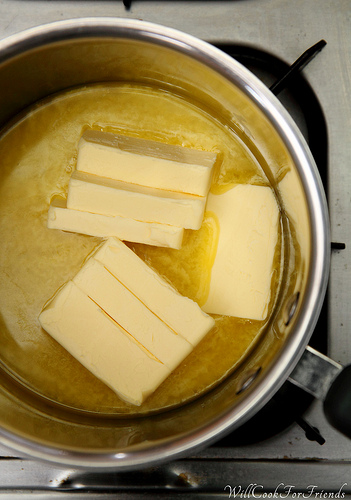
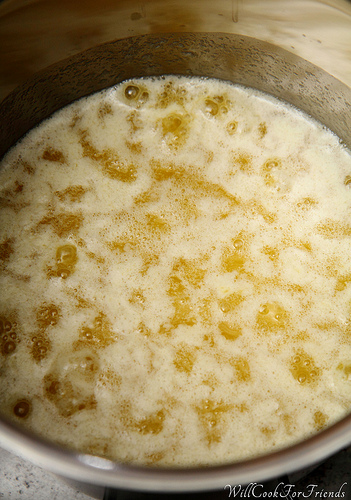
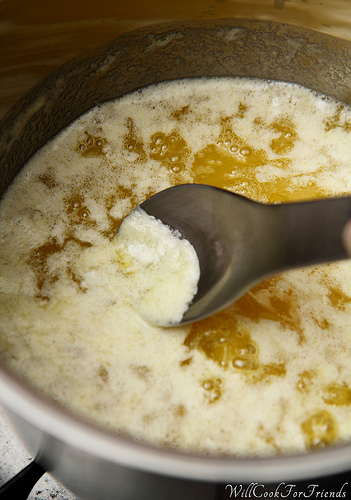






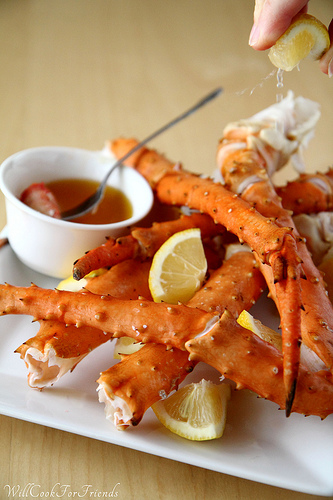






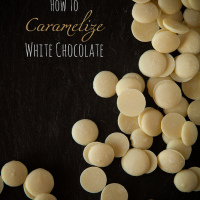
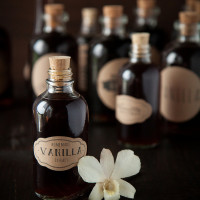
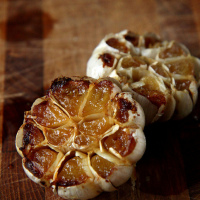
Thank you for this because I’m not very familiar with ghee, so you taught me something today!
unctuous is such a wonderful word :) ohhh butter, I love the stuff. Great post explaining the differences, I’ve seen jars of Ghee at stores but never knew how it was really different. I agree with you, Kerrygold butter is so dang good :)
Isn’t it just? There are a few other brands of imported butter I keep meaning to try, but so far I keep sticking to what I know. :P
LOVE THIS! My boyfriend loves ghee and I’ve been wanting to make it for him for a long while. Happy to finally have a resource – picking some up this weekend!
And by some I mean butter ;)
Wonderful – glad I could be helpful!
Ghee looks heavenly…
Shobha
The food photography on this site is rad! Nice work!…You can’t know who I am..
Making this today. So stoked! :)
if you mix ghee with water, and put it in the fridge….will it re solidify and separate the water from the ghee, as butter does?
Yes, the water should separate from the fat, unless there’s something to create an emulsion (a stable bond between the water and fat molecules).
Thanks for the great info.:)
Hi, I made ghee by boiling but the color is not like honey but dark brown.. what could have gone wrong????
Hi Abirami! If you cook butter too long, or at too high a temperature, the milk solids will toast, turning the butter brown. Browned butter is delicious and nutty (as long as it isn’t burned — if it cook too long, the milk solids will go beyond toasted and burn, in which case your butter will have a bitter taste to it.) Try cooking at a lower temperature for less time, this way the water evaporates out of the butter before the milk solids get very toasted. Hope that helps!
Hello! I’ve been clarifying butter for years. I used salted, then read to use unsalted, but I didn’t like the result as well so I went back to salted. I don’t usually keep in the fridge because I like it soft.
Two things I have observed: 1) If I pour the fully melted and separated butter into a wide mouth jar and put in the fridge, the solids stay at the bottom of the jar and the “good stuff” is on top. Once the top part is set, I can use a butter knife to cut thru the solid and pour off the liquid, which I think takes away the solids as well. It seems much easier than cheesecloth. Once the whey is removed,then I can store it out of the refrigerator.
2) On occasion, I have had butter that was left out for several months. It gets a blue cheese flavor. I have eaten it and suffered no ill effects. If one likes blue cheese, it is quite tasty on bread. I have wondered if I am taking a health risk here. I know you recommend caution,but do you know what would give the blue cheese flavor? There is no appearance of mold–just the flavor of a mild blue cheese.
Thanks for your blog and for any info you can provide. And especially for the reasoning behind salted vs unsalted butter. It is something I had wondered about.
Hi Lily, thanks for the comment! I’m glad you found the post helpful. I’m not sure why the butter would take on the taste of blue cheese — perhaps it’s attracted the specific bacteria that create that flavor? Either way, that’s really interesting. Perhaps you’re on to a whole new thing — aged butter!
Thanks for your response. I have had this happen several times. I give to my son and DIL in Atlanta and the first time I noted the flavor/smell, I emailed him. He is not quite a germaphobe…but close. However, he said that he had noticed it, but liked the flavor. Since it has happened several times, I wonder if it’s a mold (that’s what makes blue cheese blue cheese, I think) that is resident in my kitchen. Since he ate it and was okay with it, I guess I will be, also. I’ll let you know if I get any bad results.
In the meantime, thanks for your blog!